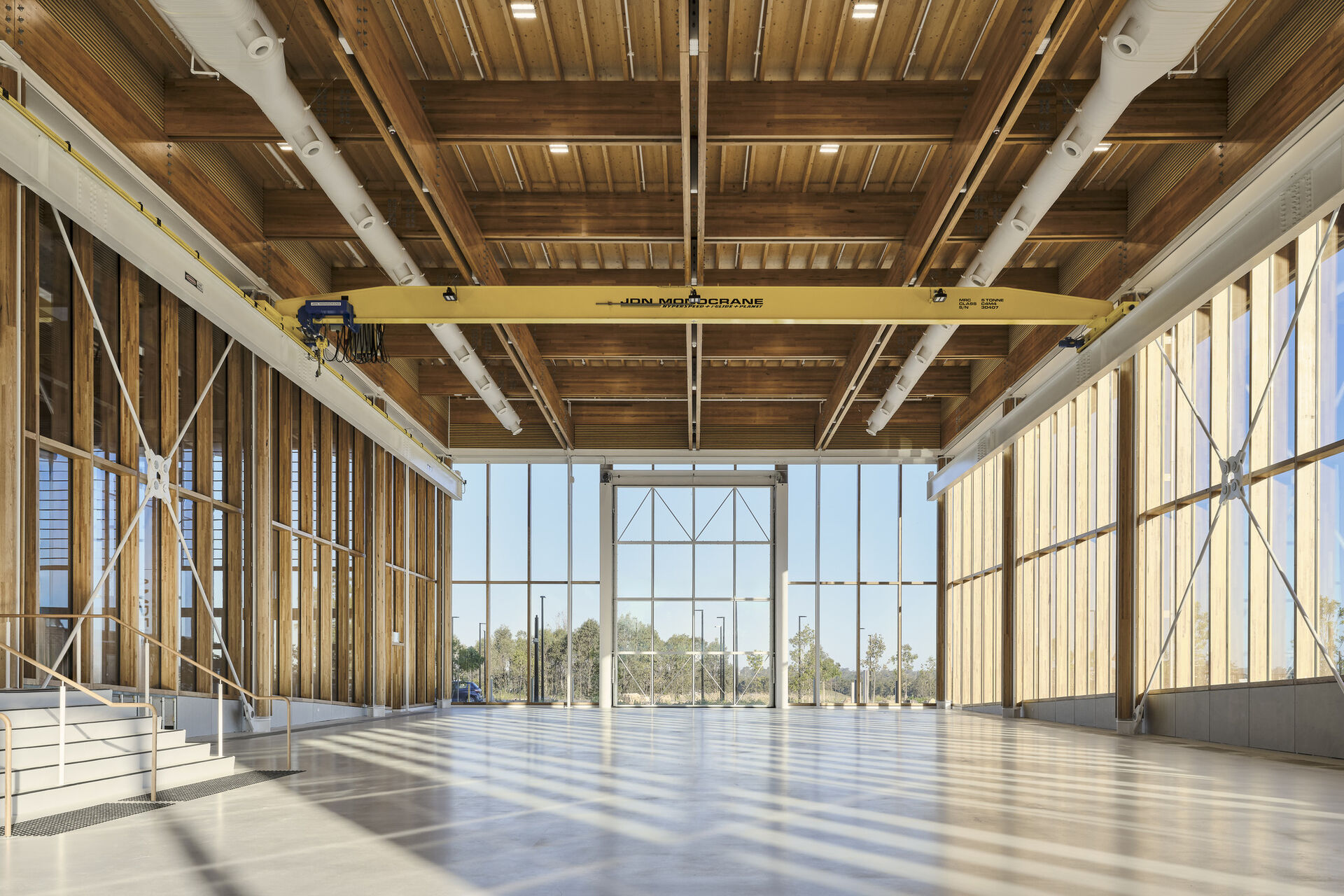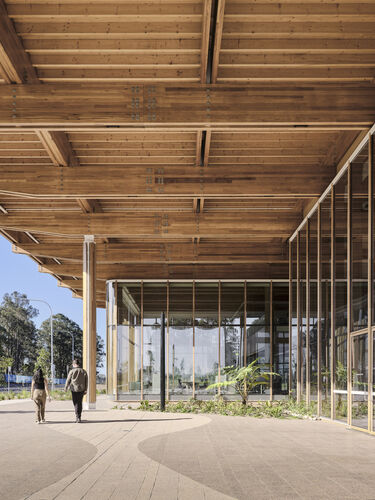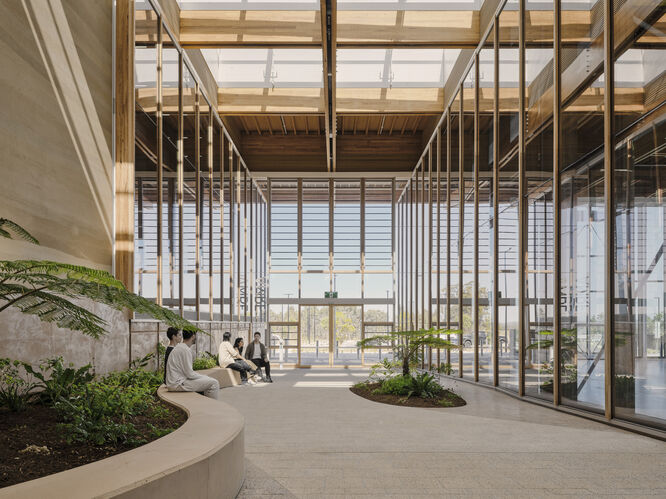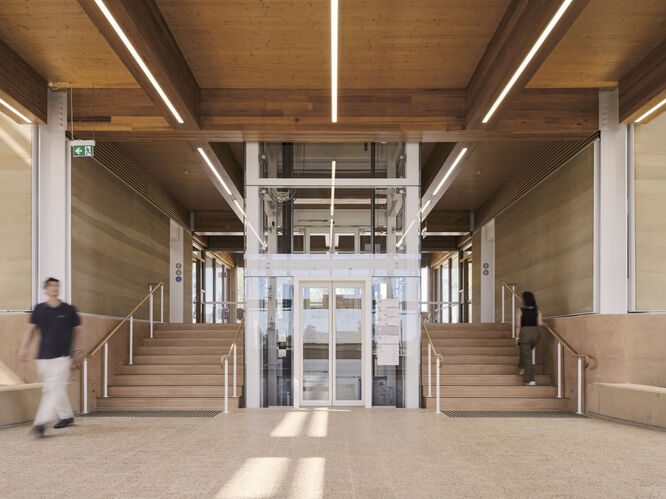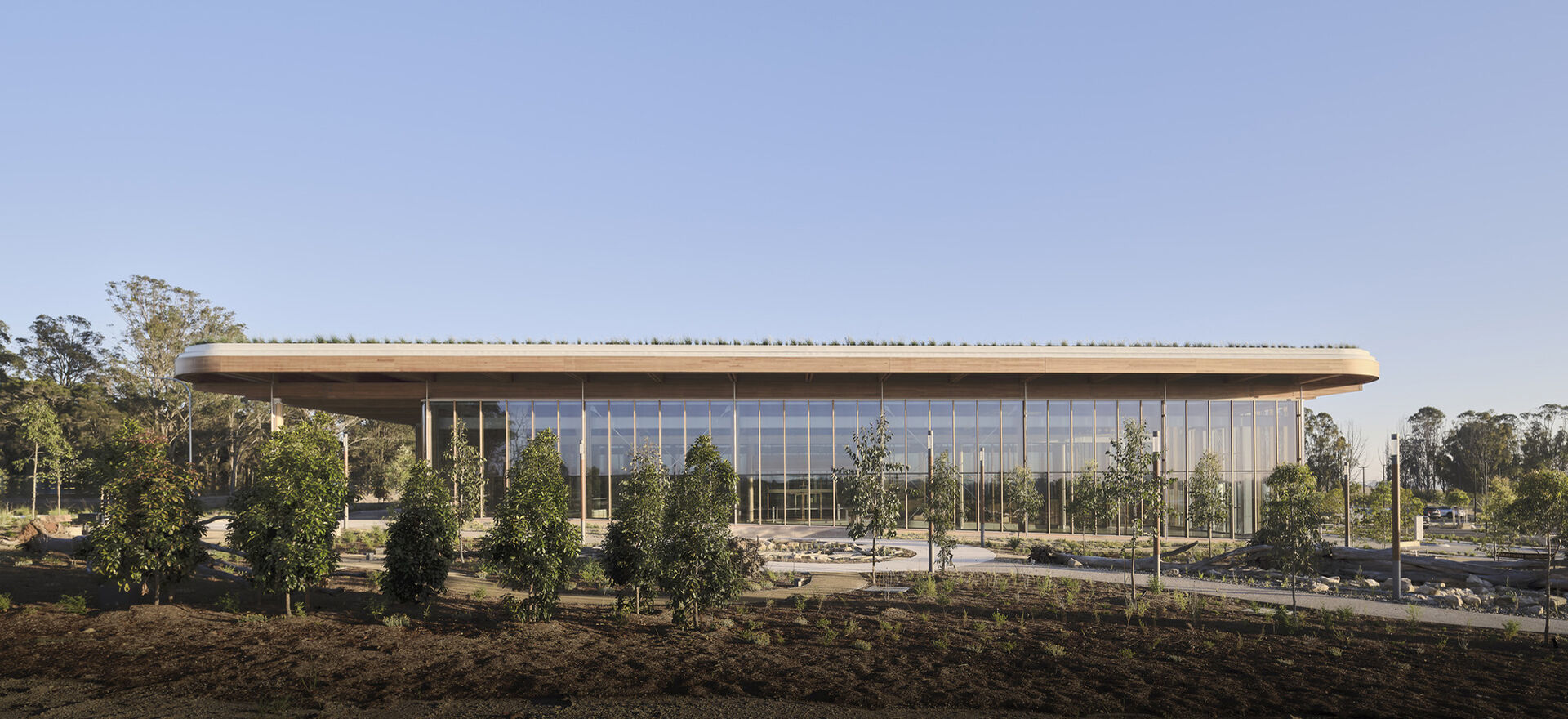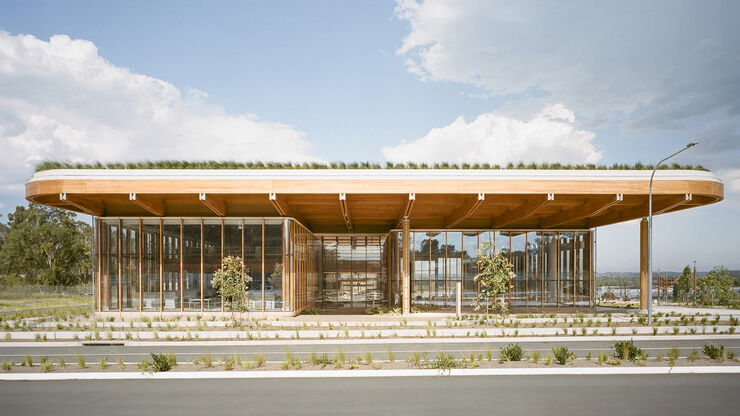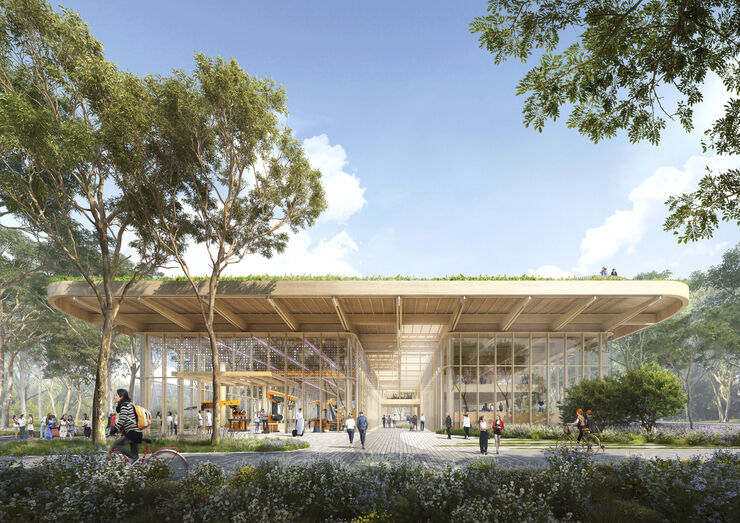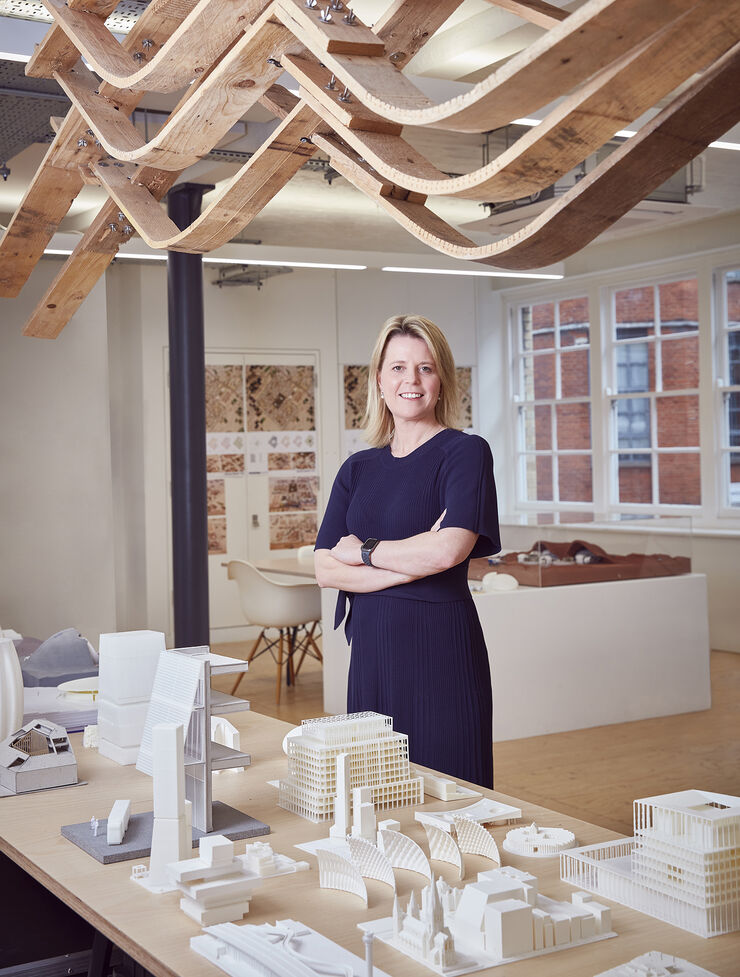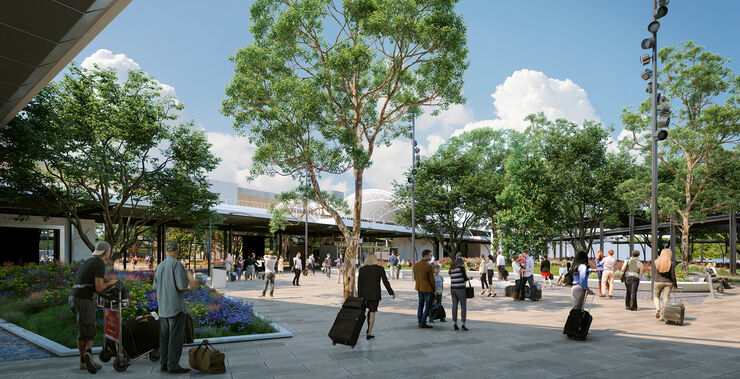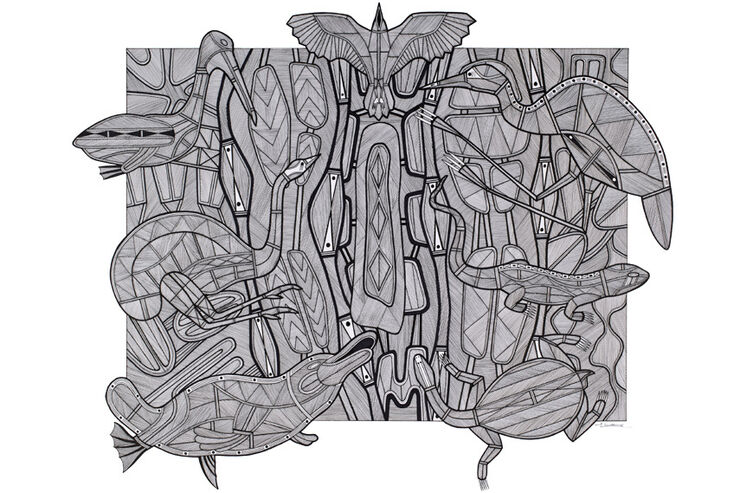Sustainability highlights
The First Building incorporates Indigenous culture into its outcomes, setting new and durable benchmarks for connection to Country and sustainable design principles. It’s also designed with the circular economy in mind — and can be disassembled or adapted at the end of its life.
Highlights include:
- A 50% reduction in embodied carbon is achieved via advanced timber technology above ground, which negates the need for a traditional concrete structure. In the ground, low-carbon concrete is utilised.
- Using Life Cycle Assessment (LCA), low-embodied carbon building materials, including rammed earth, have been selected to connect the building back to the Country.
- The building’s prefabricated modular components were transported to the site and mechanically fixed together, reducing construction time and cost substantially.
- Fifty per cent of the roof is covered in photovoltaic devices, with portions immersed in rooftop vegetation, which reduces ambient temperatures and increases energy production efficiencies.
- The building adopts a holistic approach to the water cycle informed by traditional Indigenous practices in this region. Permeable hard surfaces allow water to naturally filter back into the local creek network, retaining water bodies to promote biodiversity and celebrating water by bringing people closer to it.
- Natural ventilation is used 60% of the year in the workplace and public areas. A ‘red light green light’ system notifies users which air system will be in place the following day, enhancing awareness of natural ventilation and changing workplace mentality.
Awards
- 2025 NSW Architecture Awards Premier’s Prize
- 2025 NSW Architecture Award for Sustainable Architecture
- 2025 NSW Architecture Awards Commendation for Commercial Architecture
- 2025 Powerhouse Museum Holdmark Innovation Award
- 2025 Good Design Australia Award for Social Impact
- 2025 Good Design Australia Award for Sustainability
- 2025 Good Design Australia Gold Award for Built Environment Architectural Design
- 2025 Timber Design Award for Sustainability

